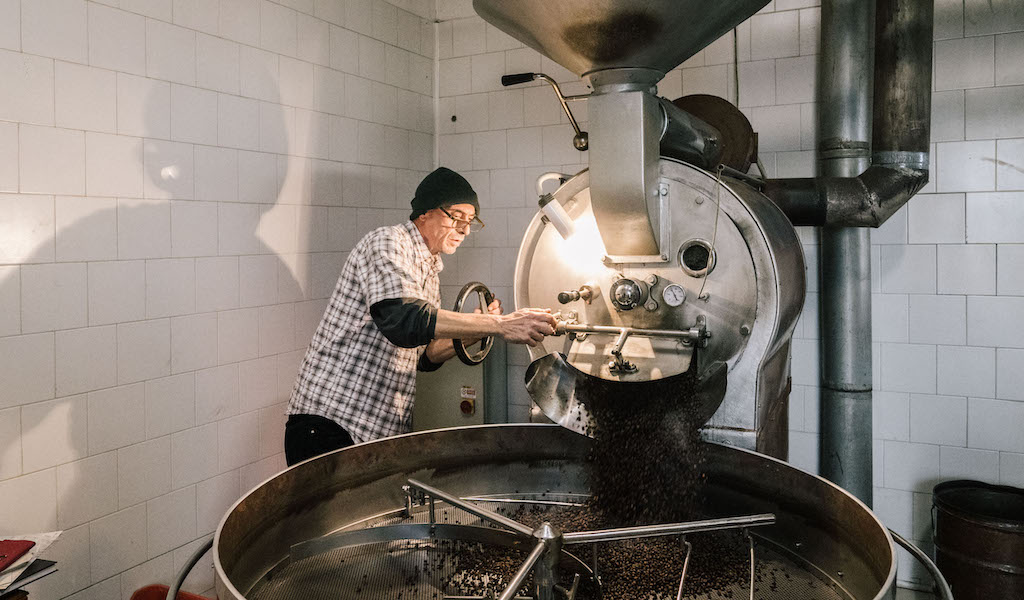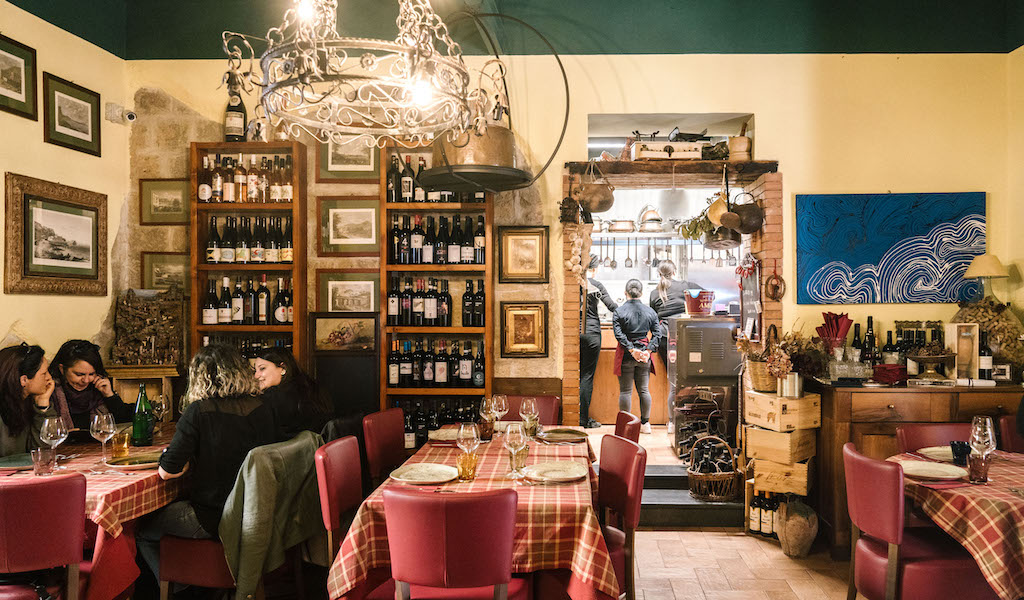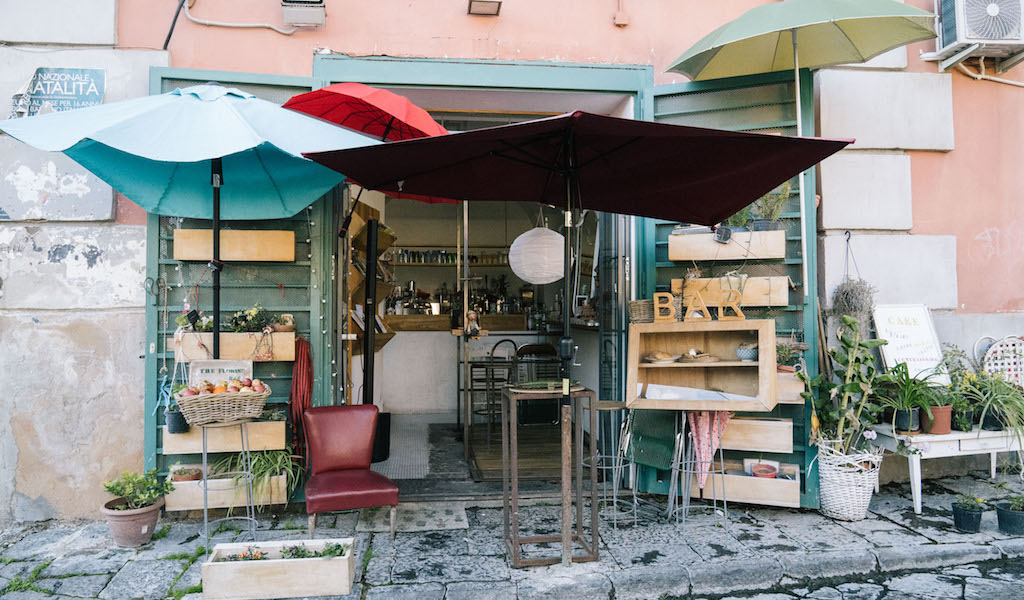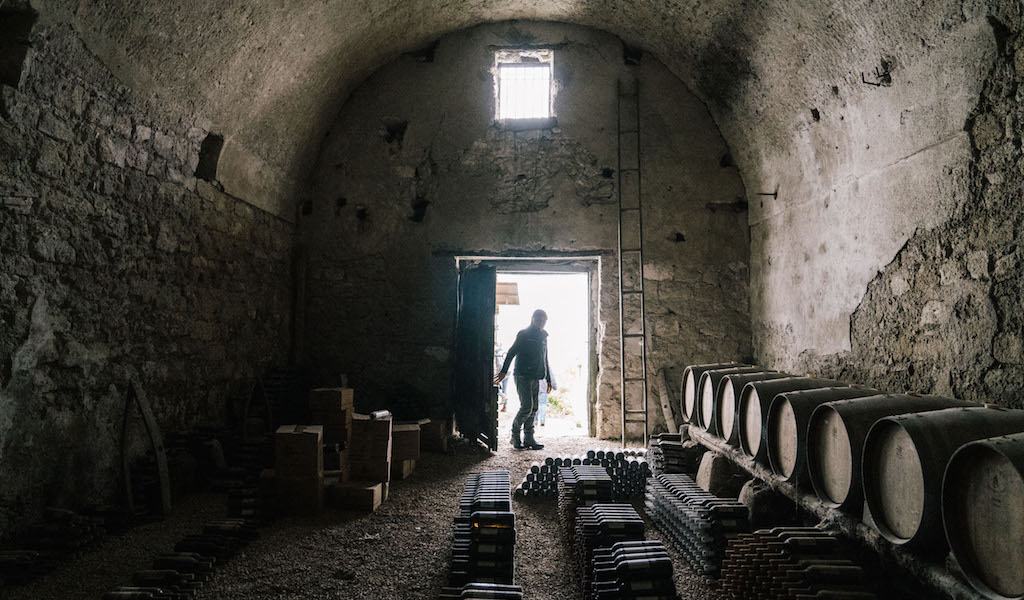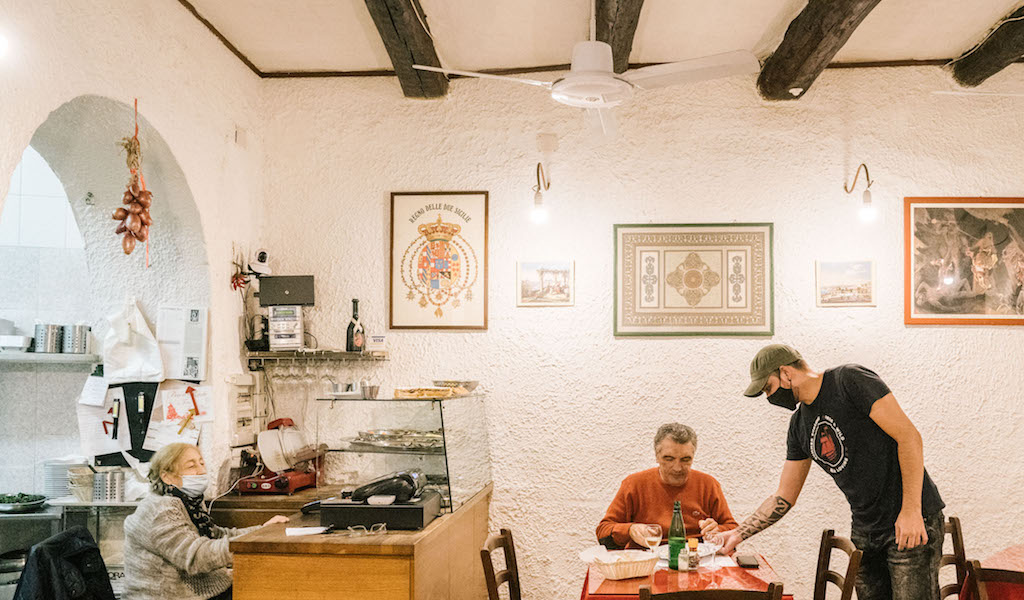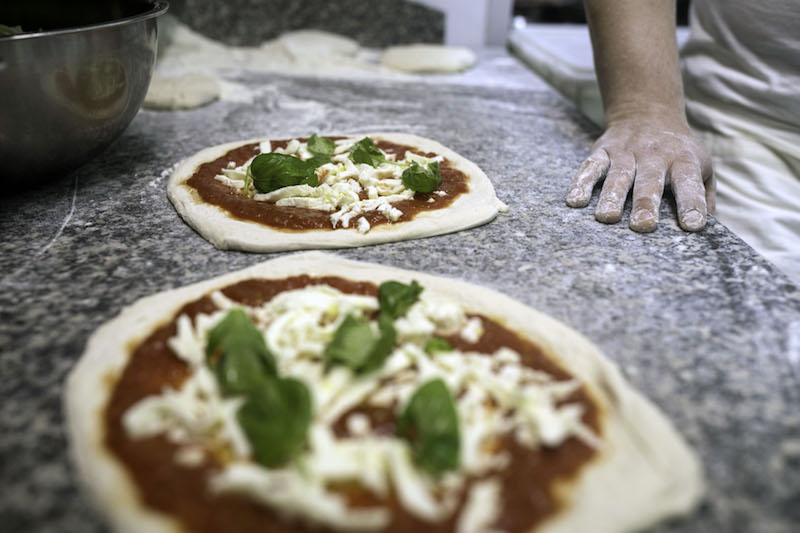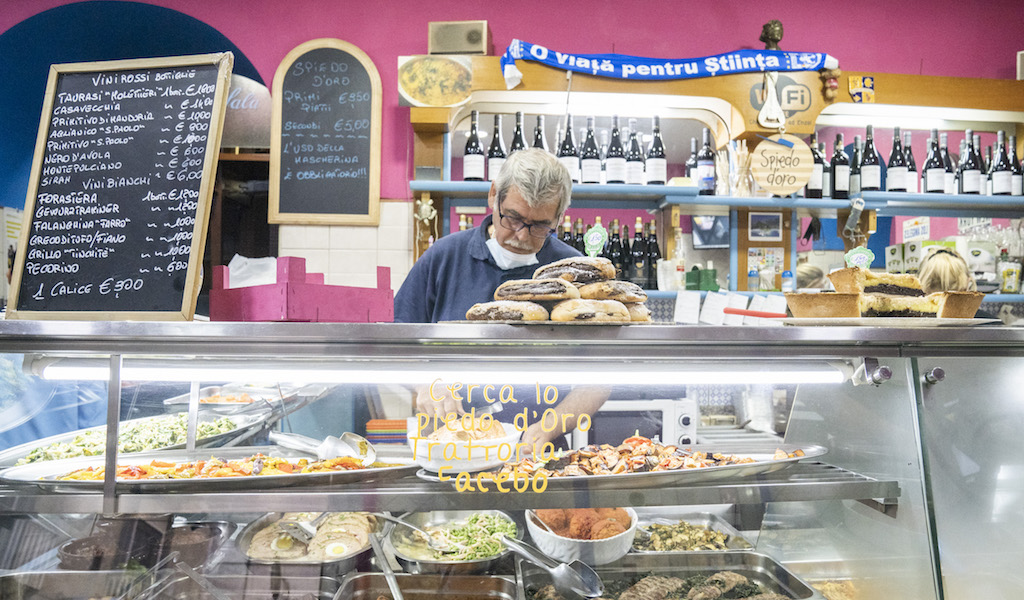We can't find the internet
Attempting to reconnect
Something went wrong!
Hang in there while we get back on track
Search results for "Amedeo Colella"
Naples
Caffè Delizia: Bacoli Blends
The last wood-fired coffee roaster in all of southern Italy is located, appropriately, in Bacoli. This area of Campi Flegrei, the Phlegraean fields of Naples (from the Greek word flègo, which means “burn”) is a part of the Gulf of Pozzuoli known since Roman times for its active volcanoes. It is here that Nicola Scamardella is carrying on his family’s tradition of roasting coffee with a wood-burning machine. Nicola is known in Bacoli as the son of Pasquale Scamardella, a man whose nickname was Pasquale della Torrefazione (“of the roastery”). In the 1960s, Pasquale and his wife Delia were working for a commercial coffee roaster in Naples.
Read moreNaples
Buatta: Comfort Food and Conversation in Vomero
Chef owner Angela Gargiulo calls her restaurant Buatta a trattoria di conversazione – a “conversation eatery.” Tucked in a peaceful corner of Vomero, the Neapolitan shopping district, Buatta is “…a conversation restaurant in the true sense of the word,” Angela tells us. “After cooking, and now that I have excellent collaborators [to help] in the kitchen, I have time to sit next to my customers; I talk to them at the table about the strangest things; it's as if they came over to my house.” Little by little, the restaurant (whose name, Buatta, from the French boite, is a Neapolitan word that means “jar”) has become a destination for those who love simple and quality cuisine, and for those who love to chat.
Read moreNaples
The Florist Bar: Urban Paradise
There are flowers all around us. Seeds and plants are scattered here and there. Herbs and fresh fruits rest in wicker and reed baskets. Sitting amongst all this glory is Stefania Salvetti, who is telling us about Paradisiello, where she lives. Meaning “Little Paradise” in Italian, Paradisiello is where Stefania has a home with 2,000 square meters of greenery, citrus trees and even chickens. The big surprise? What sounds like a glorious village outside of Naples is actually a quarter within the city, very close to the historic center. Il Paradisiello is a small, romantic, peaceful place just a few meters from the noisy city. A site where time seems to stand still, the air somehow more rarefied.
Read moreNaples
La Sibilla: Wine Among the Ruins
We climb up, arriving at the edge of the ancient Roman thermal baths of Baiae, which date back to the 1st century BCE. It has been pouring rain, but we see no standing water here. "We take obsessive care of the soil, and the water is cleverly drained just as our predecessors used to do it,” Luigi Di Meo, 61, tells us. Luigi is the owner of La Sibilla winery and vineyards, the grounds of which spreads out around us on this dreary day.
Read moreNaples
La Cantina di via Sapienza: The Real Deal
The requirements for a place to qualify as an authentic Neapolitan trattoria are simple: It must be tiny, intimate and quiet, with a small menu and a genuine atmosphere. In other words, it must be La Cantina Di Via Sapienza. This is not a trattoria with fake antiques strategically placed inside to draw tourists or chic Neapolitans looking for “aesthetic” culinary experiences. Rather, La Cantina Di Via Sapienza is a true neighborhood spot that serves meals to the employees and nurses of the nearby polyclinic, and to the students and professors from the various universities of the historic center.
Read moreNaples
Best Bites 2021
Neapolitan restaurateurs hit the restart button in the year 2021. Dining has adapted to the new rules brought on by the Covid-19 pandemic – but at least we can say, at last, that we are back to having lunch in a restaurant. I missed sharing the experience of the restaurant so much. Sitting next to a stranger and breaking bread together. Making new friends and meeting old ones. Socializing. The trattorias and cafeterias where moments like these are possible are the places I pray for each night. That they will survive another month, another possible lockdown. Watching some of these close was a very hard blow, but there is something in the air again, something starting up. Naples is once again filled with tourists and there is a need, an urge, to be social once more.
Read moreNaples
Spiedo d’Oro: Neapolitan Gold
Behind the counter at the modest Spiedo d’Oro, owner Vincenzo Monzo and his wife Cinzia have something welcoming to say to every customer who walks in. “The eggplant parmigiana will be ready in 10 minutes.” “The pasta and beans have just come out.” “Salvatore! You alone? No wife? We'll make you a plate of Genovese, and the gattò is on its way.” With a few spartan tables and a glass-lined counter where you can see everything that is available for lunch, Spiedo d’Oro is the definition of a no-frills joint. Like everyone around us, we’ve come here not just for the warm welcome but also for the simple but excellent Neapolitan dishes.
Read more